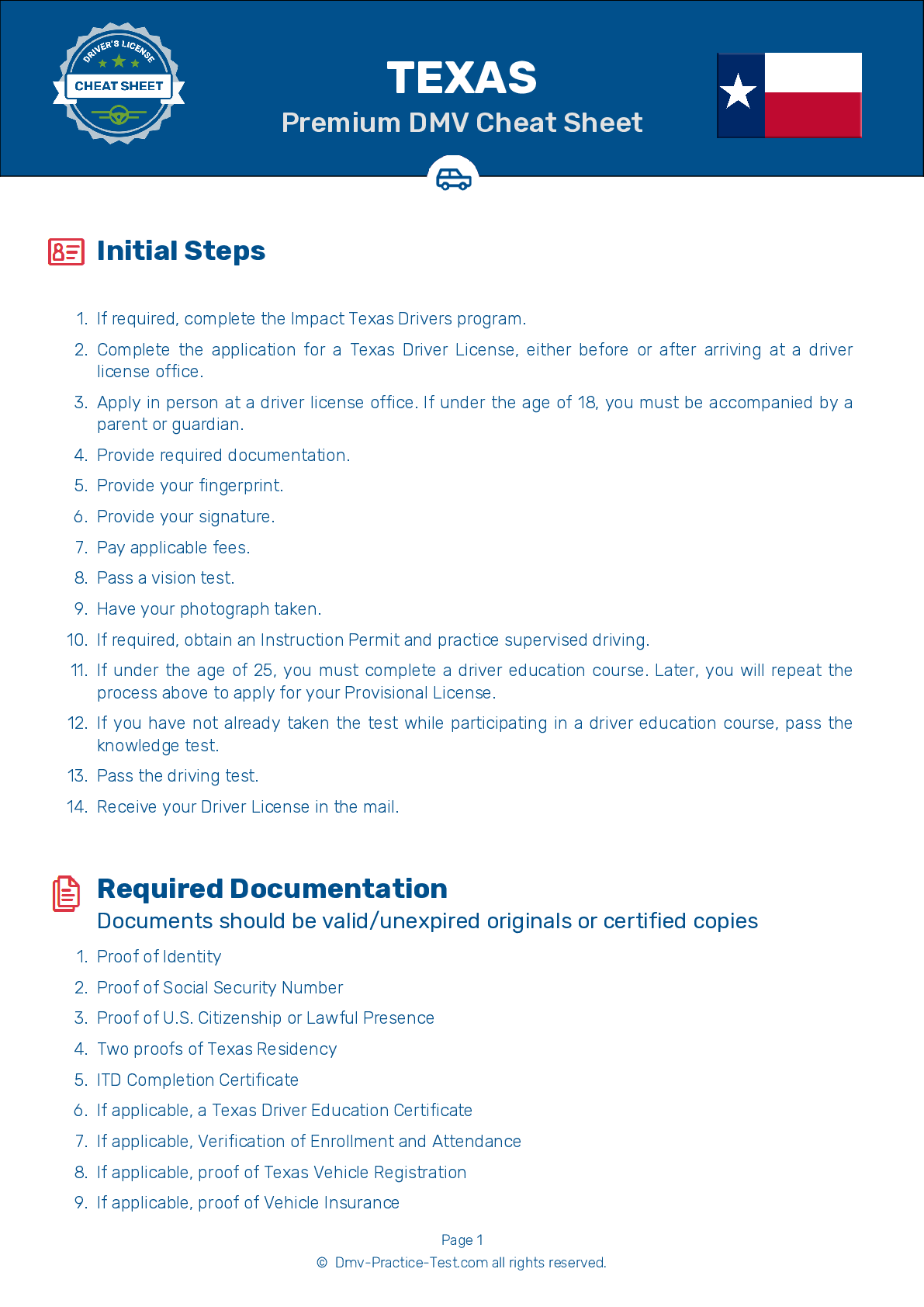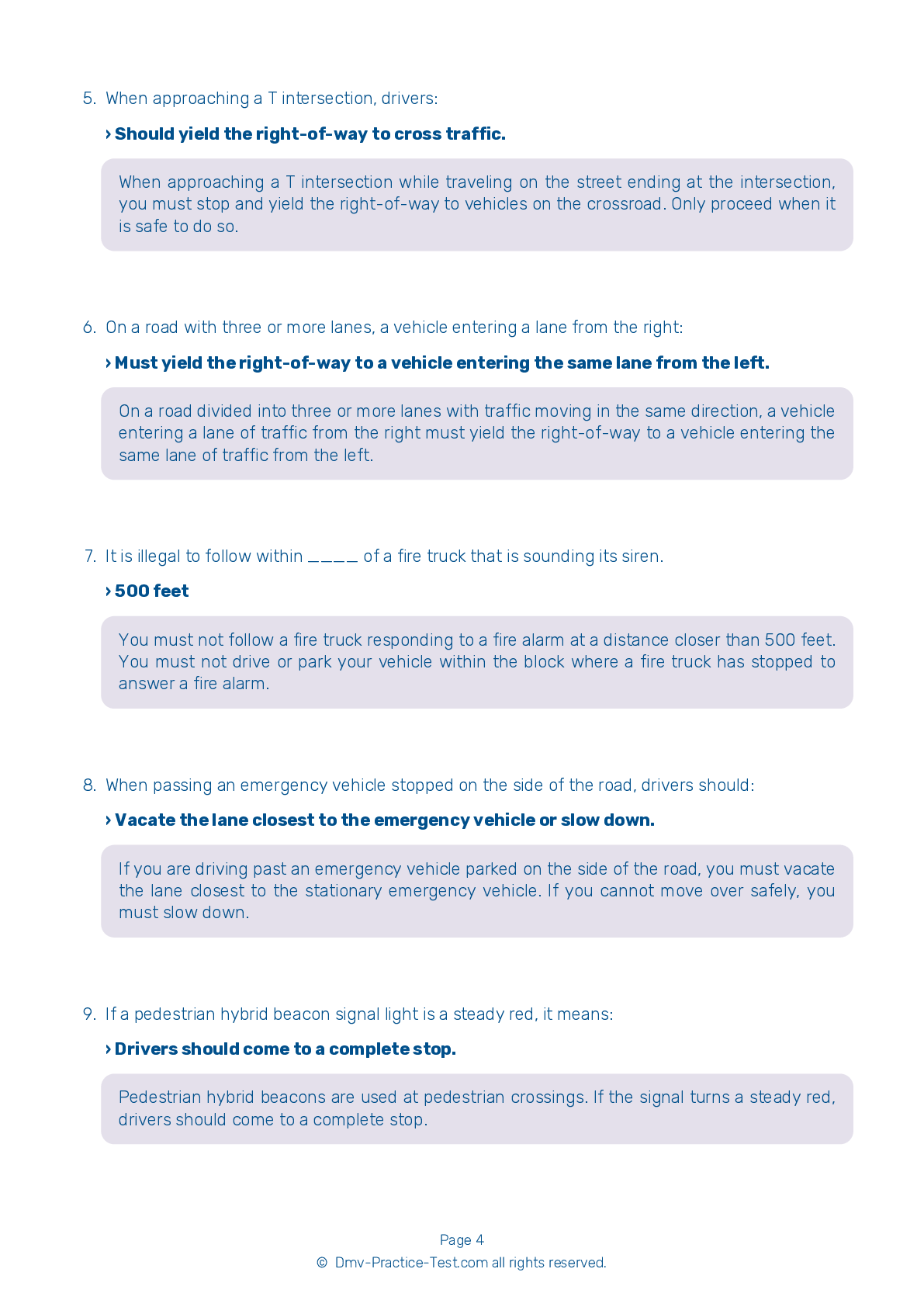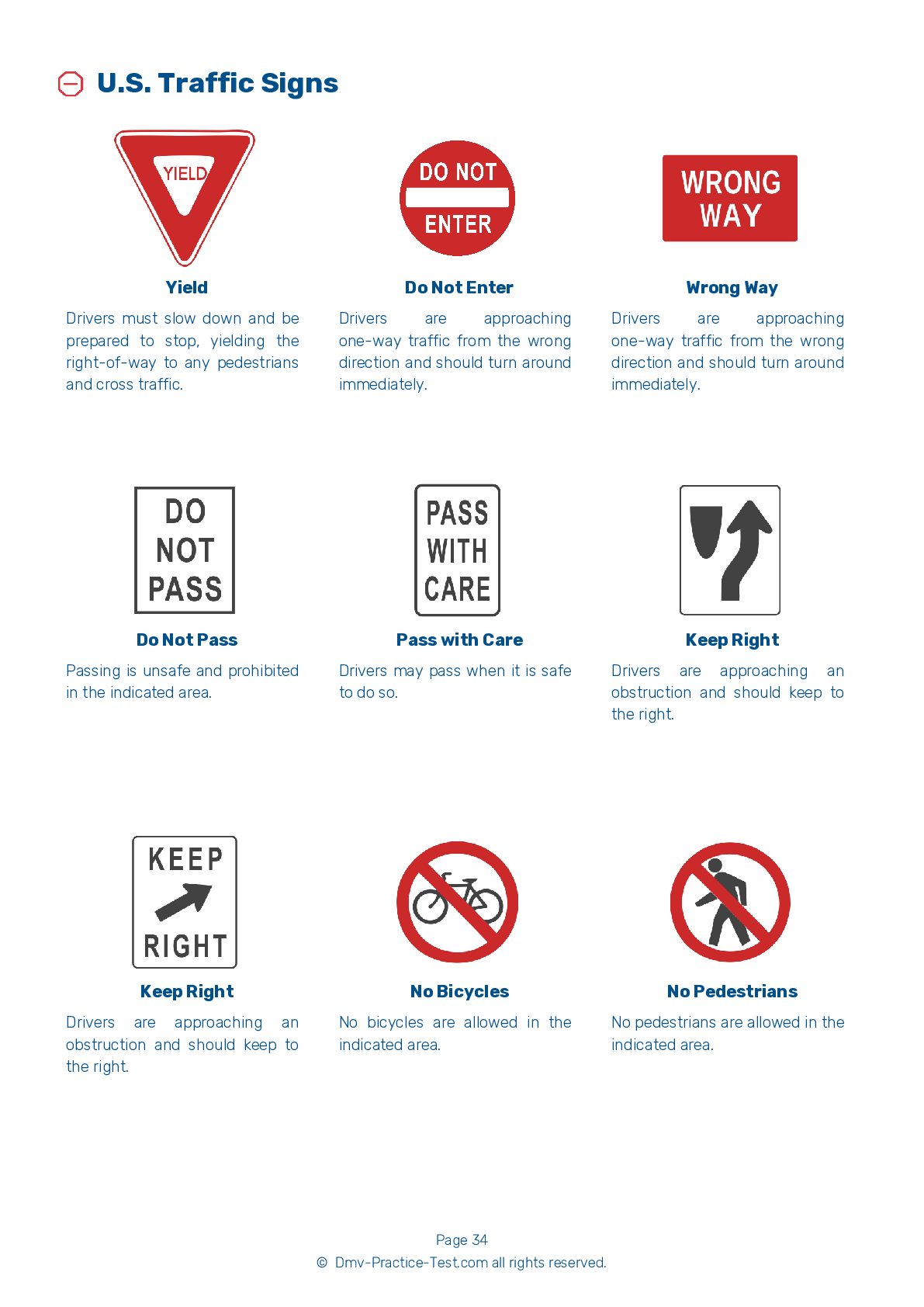FREE Texas DMV Practice Test #5 Page 3 of 5
For January 2025, the Texas DMV practise exams have been revised. It comprises questions based on the most important traffic signals and laws for 2025 from the Texas Driver Handbook. To study for the DMV driving permit test and driver's licence exam, use actual questions that are very similar (often identical!) to the DMV driving permit test and driver's licence exam.
Each question on the practise exam has a tip and explanation to help you recall the ideas. Questions about traffic rules, traffic signs, and driving statutes, as well as knowledge from the Driver Handbook, will be included in the written portion of the official Texas DMV test.
You must properly answer 21 of the 30 questions to receive a passing mark. Use the Texas Department of Motor Vehicles' practise exam to help you prepare for your instruction permit or driver's licence.
The DMV exam is offered in a variety of languages.
Using any form of testing help will result in an automatic fail, and the DMV may take further action against your driver's licence, so avoid it.
13 . Which of the following is true regarding seat belts and child restraints in vehicles?
Before you drive, always fasten your seat belt and make sure all your passengers are using seat belts or child restraints. Studies have shown that if you use seat belts, your chances of being hurt or killed in a traffic crash are greatly reduced. Children age 12 and under should always ride properly restrained in a rear seat. Never put a rear-facing infant restraint in the front seat of a vehicle with a front passenger airbag.
14 . All automotive crashes must be reported within ____ days.
If you are involved in a crash that is not investigated by a law enforcement officer and the crash has not resulted in injury or death of a person or damage to property of $1,000 or more, you must make a written report of the crash and file it with the Texas Department of Transportation (TxDOT) no later than the 10th day after the date of the crash.
15 . You are driving in the left lane and want to move into the right lane. You should:
When changing lanes, you should check your vehicle's blind spots by looking over your shoulder in the direction that you want to move. Always check your mirrors and turn on your directional signal before beginning a lane change.
16 . Driving while being distracted by any activity:
Distractions cause drivers to react more slowly to traffic and hazards on the roadway. Distracted driving is never safe.
17 . To prevent hydroplaning, you should:
To prevent hydroplaning, you should ensure that the tires on your vehicle have good tread depth and are inflated to the proper pressure. Reduce the speed of your vehicle when driving in the rain. Hydroplaning occurs most frequently at higher speeds.
18 . You may park or stop along the shoulder of the freeway:
It is prohibited to park on the shoulder of a freeway, except in an emergency.
Need Car Insurance? No problem!
Compare the best rates in Texas and find a personalized policy that meets your needs.
1. Are You Currently insured ?
2. Married ?
3. Do you own your Home?
4. Do you have more than 1 car ?
5. Have you or a Family Member Honorably Served in U.S. Military ?
6. Your Name
7. Age
8. Zip code
IMPORTANT REMINDER:Auto Insurance is Mandatory to drive in Texas. Get covered before you hit the road to avoid any fines.
Ranked by best match



